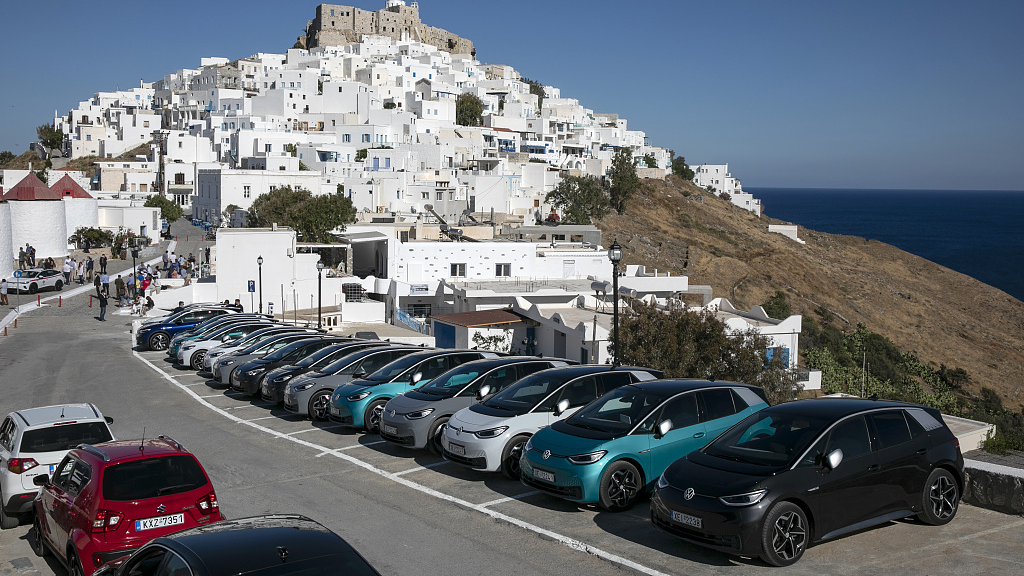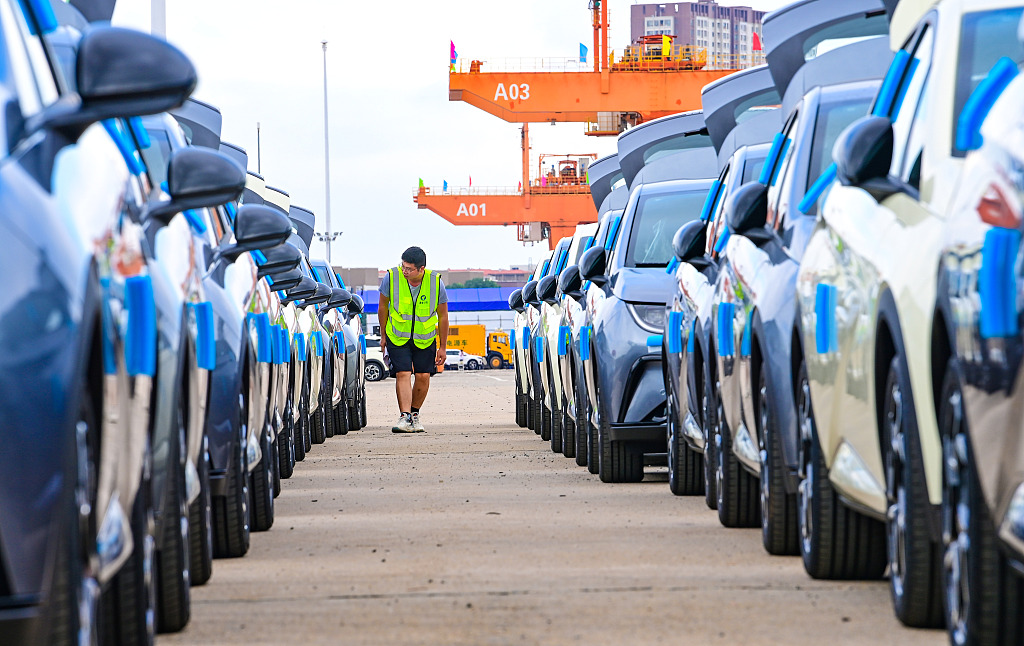
A row of electric cars park on the roadside at the foot of a hill in Astypalea, Greece, June 2, 2021. /CFP
A row of electric cars park on the roadside at the foot of a hill in Astypalea, Greece, June 2, 2021. /CFP
Editor's note: Freddie Reidy, a special commentator for CGTN, is a freelance writer based in London, who studied history and history of art at the University of Kent, Canterbury, specializing in international politics. The article reflects the author's opinions, and not necessarily the views of CGTN.
Concerns from the European Union over its industrial performance, especially around its automotive sector, this week have led to the announcement of an inquiry into the possibility of punitive tariffs (in addition to the 10 percent tariff) on the import of electric vehicles (EVs) manufactured in China into the bloc.
What is particularly striking about this move is that it appears to have originated from political factions within the European Union rather than being an industry-led demand. This is perhaps not surprising as government intervention carries a great deal of risk for manufacturers and their prized foreign markets. In 2022 alone, the EU exported 1.1 million cars to China, accounting for over 55 percent of China imports.
Responding to the announcement of the EU's inquiry, China's commerce ministry warned of a grave risk that would "seriously disrupt and distort the global automotive industry supply chain."
While China's EV market is booming domestically and continues to expand, it presently only accounts for 8 percent of EVs in the EU. Many would therefore argue that the consumer should be given the choice to decide.

A port staff member inspects new energy vehicles to be exported at Ganzhou International Dry Port in Ganzhou, southeast China's Jiangxi Province, September 13, 2023. /CFP
A port staff member inspects new energy vehicles to be exported at Ganzhou International Dry Port in Ganzhou, southeast China's Jiangxi Province, September 13, 2023. /CFP
In the interest of a level playing field, the EU has proven to be inconsistent in its regulation, which has made investment in the market complicated. During the COVID-19 pandemic, the bloc approved a sizeable 6 billion euro ($6.4 billion) subsidy for Germany's flag carrier airline Lufthansa, at a time when other governments with considerable investment in the Eurozone were deprived of government subsidy due to EU competition law.
Other cornerstones of EU industry have also received government patronage such as Airbus, which is 25.9 percent owned by European governments or Stellantis, the French automotive giant of which the French state is the third largest shareholder via the state investment bank Bpifrance.
Beyond the infamously complex EU competition laws is the arguably far more salient rationale for the EV market in its entirety, the realization of global climate objectives. The EU is currently committed to banning the production of traditional combustion engines by 2035 and achieving carbon neutrality by 2050. Central to this is the adoption of EVs.
The grave risk here therefore is that, as Bill Russo, founder of the Shanghai-based automotive consultancy Automobility, told the Financial Times, such moves by the EU "could place a moat around Europe, as protectionist measures in the U.S. have also done." At the moment, U.S. tariffs on Chinese EVs stand at 27.5 percent, a sizeable figure further amplified by high inflation.
In relation to the transition of drivetrain technology to electric, the EU has adopted bungled protectionist policies. Acts of aggressive protectionism are harmful to consumers because they artificially suppress the competition of an open market that keeps prices competitive. On average, hybrid vehicles are at least 20 percent more expensive than conventional vehicles, and competition intervention could exacerbate the price hike of hybrid vehicles, which would therefore likely have a detrimental impact on the rate of adoption. This would create a need for central governments to introduce subsidies to encourage adoption, flying in the face of the objection to the import of foreign vehicles.
New technologies bring new challenges, but the wider goal of carbon neutrality cannot fall victim to protectionist policies that favor short-term objectives over long-term sustainability in economic and ecological terms. The EU must therefore choose between artificial domestic price regulation and maximizing the realization of its climate objectives.
(If you want to contribute and have specific expertise, please contact us at opinions@cgtn.com. Follow @thouse_opinions on Twitter to discover the latest commentaries in the CGTN Opinion Section.)